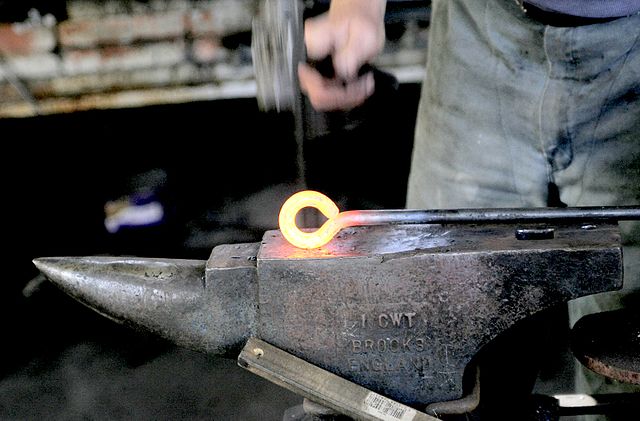We just learned about the Anvil - Pritchel Hole.
When a blacksmith has a piece of hot metal, there are a few different types of hammers they can use.
One is called a ball-peen hammer.
This hammer has one flat side, and one rounded ball shaped side.
Peening metal means to hit the metal with a hammer to bend or shape it.
Because the one side of the ball-peen hammer is ball shaped, it will bend and shape the metal differently than a flat hammer.
The ball shaped side has a few different uses.
It can be used to make small marks in the metal for a different look.
It can help hammer small nails called rivets into holes.
It can help mush the metal up against corner pieces.
(from: wikipedia - ball-peen hammer)
Kid Facts - Blast from the past: Lightning Rod


















